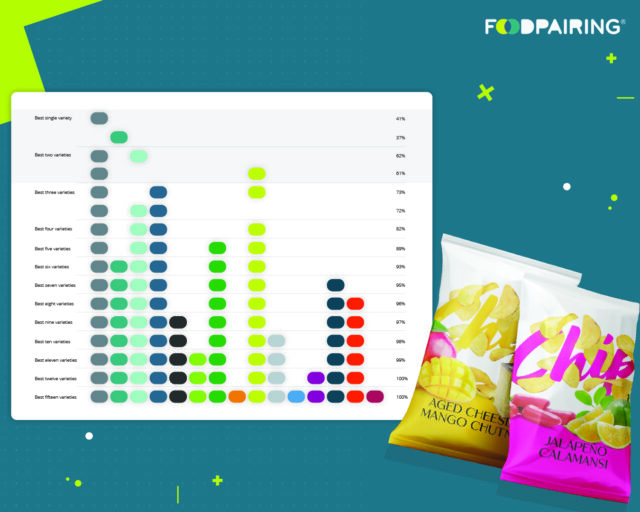The capabilities for product research and development in the CPG food industry have come a long way in the last few years in response to a rapidly changing modern business environment, yet most companies are still fighting to catch up. The number of companies that have invested time and money to create products that don’t end up lasting is staggering. Our CEO, Johan Langenbick, puts it like this:
“The process used today for R&D is not efficient enough for the context within which companies are operating in now. Anywhere from 75-90% of products are not present in the market, just two years after they were launched.”
Potentially the most important innovation that is changing this landscape is that of digital twins. But what does digital twin means? A digital twin (DT), or Digital Twin of the Customer (DToC), is a dynamic virtual representation of a customer that simulates real customers, learning to emulate and anticipate their behavior. By creating this sort of synthetic data, companies can train advanced algorithmic models on larger datasets to arrive at more precise insights about their consumer landscape. According to Langenbick:
“By using digital twin models and the right algorithmic models, food and beverage manufacturers can lower the inefficiency in their product development from 80% down to 30% and can potentially unlock a 70% predicted success ratio for new products introduced into the market.”
What Impact will DT have on Consumer Packaged Goods Companies (CPGs)?
While any company can benefit from the use of DTs, the consumer goods industry is extremely well-placed to leverage this key innovation. For a CPG company, DT can create a fundamental inflection point for the business because they can drastically reduce product development time and cost by up to 50%. This has a direct impact on profitability and can transform an organization, if implemented correctly.
DT can also play a big role in improving the overall customer experience by fine-tuning business strategies and decisions to be better aligned with what customers actually want. They can help businesses better understand customer needs, develop key enhancements to existing products and services, and to help drive innovation for new products and innovative flavors that can better serve the consumer base.

Some benefits of digital twin technologies are that they can help improve the efficiency of processes such as Total Unduplicated Reach and Frequency (TURF), consumer tests to predict buying intent (FMOT), and hedonic liking (SMOT). These enable companies to predict product success in advance and leverage insights from different countries and consumers to launch relevant, yet exciting, products for their target customer.
Large corporations such as Pepsico are already using digital twin systems across different areas of their business as the technology has demonstrated its efficacy in enhancing the internationalization of portfolios for FMCG food companies who are utilizing AI.
 Some more specific examples include Oreo (Thins Salted Caramel), Ritz (Cracker Sandwiches – Cream Cheese & Herb), Toblerone (Swiss Chocolate with White Chocolate & Raspberry Nougat), KitKat Chunky (Peanut Butter, Lotus, Caramel), Cadbury (Dairy Milk with Caramel) and many others who successfully took new launches into new locations such as: the USA, the UK, Canada, Australia, New Zealand, and across the whole of Europe.
Some more specific examples include Oreo (Thins Salted Caramel), Ritz (Cracker Sandwiches – Cream Cheese & Herb), Toblerone (Swiss Chocolate with White Chocolate & Raspberry Nougat), KitKat Chunky (Peanut Butter, Lotus, Caramel), Cadbury (Dairy Milk with Caramel) and many others who successfully took new launches into new locations such as: the USA, the UK, Canada, Australia, New Zealand, and across the whole of Europe.
This digital twin technology is revolutionary as it can allow faster and more accurate iterations that draw key insights from consumer data that are unique to each market that CPG companies enter.
What are the Challenges Faced When Trying To Implement DTs?
As with so many new technologies, the key challenges faced when it comes to implementation are the know-how to build the capabilities and then the attribution of benefits to measure the return on investment. Langenbick echoes this by saying:
“The biggest challenge is that companies do not have enough familiarity with AI to measure the benefits in a CPG context.”
For instance, AI can be used to asses the pricing strategy of a segment (relative to competitors, and in response to what consumers are willing to pay), to create more effective marketing and communication channels, and a wide variety of other benefits. But if they don’t have the means to accurately measure the impact of such projects, it can be very difficult to get approval from certain decision-makers.

Companies today are constantly compelled to adapt to an ever-increasing breadth of market requirements, infamously termed as the ‘tightening noose’, and so taking on radically new technology can be a laborious and challenging process. In response to this, many will add additional resources at the end of the design chain, to bring the necessary skills on board, but they can end up being poorly integrated and not aligned with the wider strategic objectives.
This means that companies can spend millions on customizing ERP and PLM systems to suit new requirements and to supplement data gaps, without seeing the requisite results. A new paradigm shift is required in the way that CPG companies think about these sorts of implementations.
Where To From Here?
The CPG food companies that are going to succeed are going to be the ones that can navigate these uncharted waters and work with professional partners that can help to fully integrate DT into their organizations.
The technology has proven itself as a key driving force for portfolio optimization and internationalization into new markets, by providing the datasets needed to run advanced algorithmic analyses. Some of the key takeaways include the following:

- Can be used to track and understand consumer preferences, allowing for more personalized and targeted product offerings;
- Can be used to improve product flavors and likings by monitoring the production process and optimizing for desired flavors and textures; and
- Can accelerate international product launches by predicting changes in consumer preferences across new markets, helping companies to stay ahead of their competition and expand their global reach.
Recap
In conclusion, incorporating digital twin platforms and AI into CPG food companies can drive consumer-centric innovation, improve product quality and flavor, and enhance their ability to launch new products in international markets. It’s a space that’s well worth watching and investing the time and resources into to get ahead of the pack and to evolve with the fast-changing needs of your customers.
The Power of AI-driven NPD
Instantly evaluate millions of auto-generated new flavor concepts, product variations and formulations against a digital twin of your target consumer anywhere in the world with high predictive accuracy. Optimizing core products and building new ones is a multidisciplinary discipline. To succeed, different divisions within the organization need to collaborate seamlessly. The Foodpairing platform empowers diverse teams to make smarter decisions, faster, thus creating value across the entire business. Learn more about our technology here.




